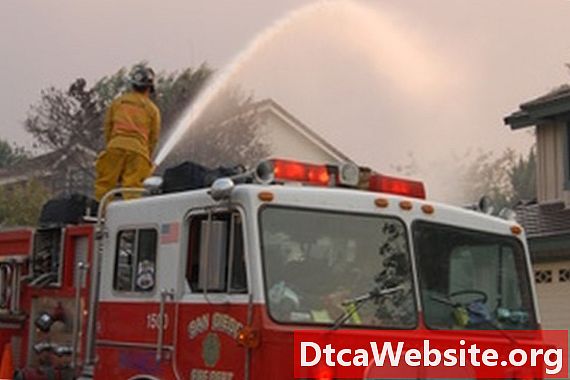
Contenu
- Variance – 10 percent
- Variance – 20 percent
- Variance – 30 percent
- Variance – 40 percent
- Variance – 50 percent
- Variances of 60 Percent and Higher
- Diesel Engines

How a loss in compression affects a particular engine depends on a lot of factors. Engine displacement, compression ratio, induction type and fuel type all come into play. When looking at your cylinder compression, always bear in mind that readings are relative. Focus on the percentage of variance from the highest reading -- and thus, best functioning cylinder -- to the lowest.
Variance – 10 percent
Variances of ten percent cylinder pressure from the highest-reading cylinder to the lowest arent uncommon, and theyre typically considered within the acceptable range for most engines. A V-8 engine has enough cylinders that in all likelihood, you wont even notice a ten percent drop in one cylinder except as an approximate 1 to 1.25 percent loss in overall horsepower.
Variance – 20 percent
A 20 percent loss of compression in one cylinder is going to, at the very least, result in an engine that feels like it lags slightly -- expect an approximate 2 to 2.5 percent loss in overall horsepower. You may notice a bit of extra engine vibration at idle on large-displacement, high-compression, supercharged and turbocharged engines.
Variance – 30 percent
At this point, youll almost certainly note that the engine has lost some of that fresh-motor pep, particularly if the expected 4 percent drop in horsepower happens quickly. Engines like those described above will have picked up a noticeable shake at idle, while smaller or lower-performance engines that dont develop as much cylinder pressure will just begin to roughen up.
Variance – 40 percent
With a 40 percent drop in compression, youre going to notice more than a slight drop in power. On a 300-horsepower engine, the expected 5 percent loss works out to 15 horsepower drop at the crankshaft. But that isnt necessarily the primary problem, because for low-performance engines with an already-low cylinder pressure -- you may have lost enough compression that fuel burn becomes unstable. The result is an intermittent misfire.
Variance – 50 percent
Definite shake at idle, worse on high-performance and turbocharged engines. Supercharged engines in particular will suffer from the loss in pressure because they have to exert so much more effort just to keep the crankshaft spinning. Low-compression engines will almost certainly start to misfire, owing to the drop in compression ratio, but the cylinder may not have died completely.
Variances of 60 Percent and Higher
Once youve lost 60 percent or more of the compression in one cylinder, its effectively dead or shaking the engine so badly that you cant ignore it. Low-compression engines wont develop enough cylinder pressure to sustain the fuel burn and ignite the whole mixture, while high-compression or forced-induction engines will essentially shake themselves to pieces or otherwise act as though they have a dead cylinder.
Diesel Engines
Diesel engines, by nature, are more sensitive to losses in cylinder pressure than gasoline engines. Whereas a gas engine can limp by and use the spark plugs as a crutch to ignite the charge, diesels rely on cylinder pressure alone to ignite the mixture. Once compression falls below about 30 percent, that cylinder is effectively dead.


